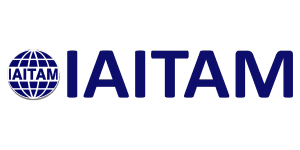Fits like a Glove: Top 10 Must-Do’s for your SAM Program
By Bill Talbot
Over the years, I’ve seen the good, the bad and the ugly from many SAM solutions. Using the lessons I’ve learned as a guide, I’d like to help you identify the best solution for your enterprise SAM needs – and avoid unnecessary mistakes along the way.
- Identify your executive sponsor. As an asset or software asset manager, sometimes we forget about larger business needs. Securing executive sponsorship provides essential support for budget, governance, project deployment, your peers, and other executive stakeholders throughout your initiative.
- Pinpoint your stakeholders. SAM stakeholders are found throughout the enterprise. From procurement to retirement, observe the life cycle of your hardware and software assets to ensure that all needs are addressed by your chosen solution.
- Recognize your requirements. Meet with your stakeholders to make sure their needs are aligned with those of your organization.
- Focus on a minimum of 3 product vendors. Establish healthy competitiveness between 3-5 vendors to best understand potential benefits and risks for your organization. This due diligence provides well-rounded information when selecting your SAM solution.
- Perform a proof-of-concept. In today’s busy world, it may be difficult to convince executives to spend valued time on a POC. However, this step is critical because some vendors have a terrific story, but are unable to execute. In fact, many solutions are limited on the number of product/vendors that they are able to manage. By basing your selection on marketing claims – and not including a POC, you seriously risk the solution failing to meet stakeholder requirements. Short change yourself here and you will regret it when a tool is unable to deliver what was promised.
- Listen to your peers. Organizational transparency doesn’t start when a solution is deployed, but when your software asset management program is initiated. Leverage peer experience and absorb new information provided by your vendors.
- Think outside the box. Many SAM vendors are limited in the range of support they offer enterprises. Testing 2nd tier software technology vendors like Red Hat, TechSmith, Attachmate, and other specialized vendors is a smart way to confirm a tool’s capabilities can meet your needs.
- Choose quick wins to help your initiative. SAM projects are daunting. Pace yourself by setting clear goals and realistic expectations. Choose strategic quick wins that promote your program and keep you on the road to success.
- Define a program roadmap. This roadmap can include 3-4 phases over an 18-month to two-year time frame. Categories include project activities, technology integration, resource needs, governance needs, identified outcomes, and key metrics/KPIs that you measure throughout your SAM program.
- Trust your gut. Work as a team to identify the good, the bad and the ugly sides of your solution. Stakeholders are keen and transparency is required to enable a successful SAM solution. But a more personalized assessment of your findings is also needed. Don’t only rely upon statistical analysis to make your decision; in the end, open collaboration among stakeholders needs to be a part of your process. Areas such as: vendor relationship status, deployment abilities, customer responsiveness, partnership abilities/inabilities, enablement opportunities, and POC results should all be factors in purchasing the best SAM solution to meet – and exceed – your program’s needs.
I hope my insights help you navigate your upcoming software asset management adventure. I’ve found that a little research, digging into the unknown, defining a program, and validating your assumptions will lead you on your way to a successful software asset management program.
About the Author
Bill Talbot is the ITAM/SAM Evangelist for Aspera Technologies
